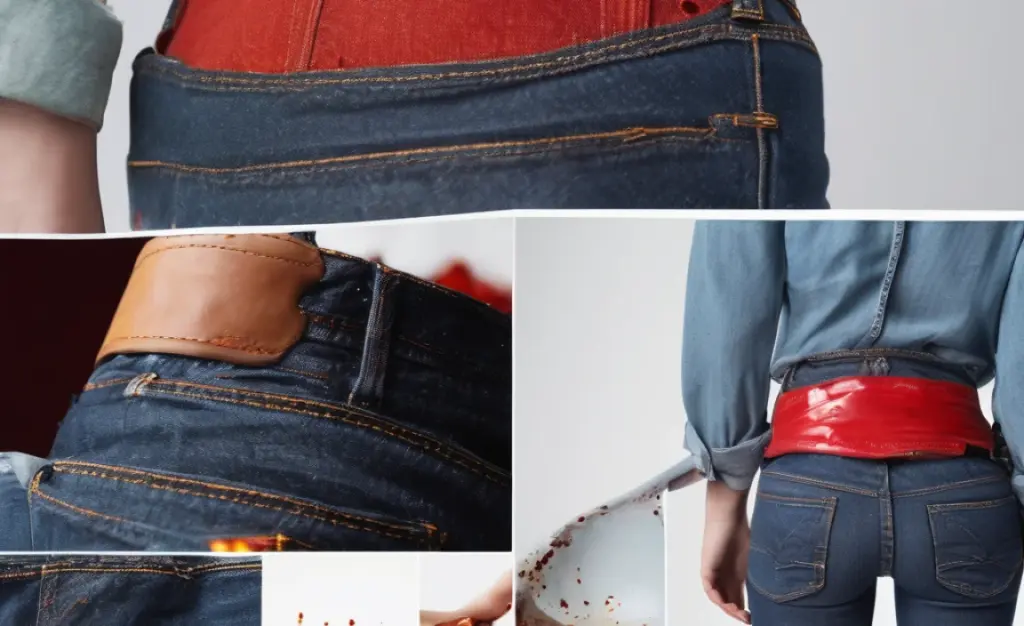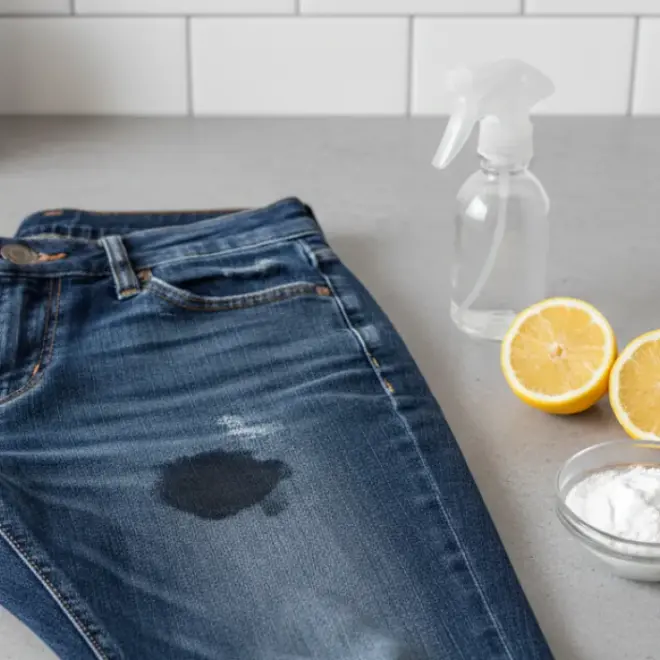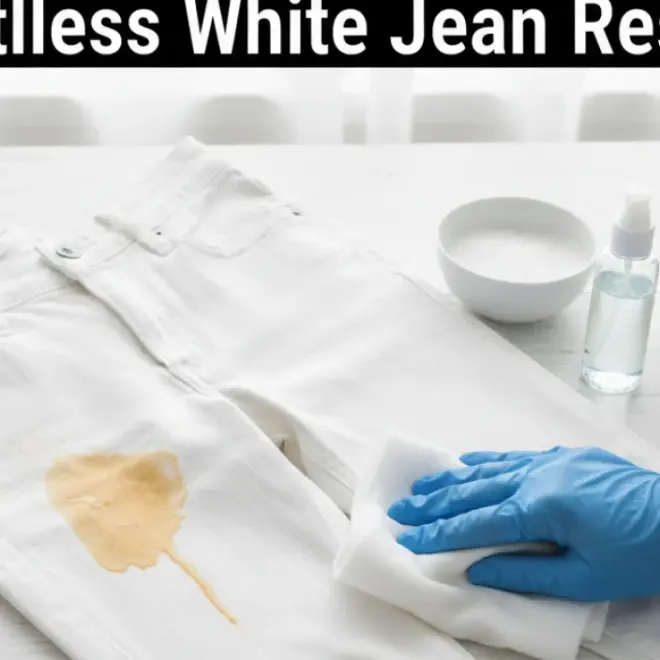Quick Summary: To remove chili oil from jeans, act fast by blotting the stain, applying dish soap directly to the spot, letting it sit, and then washing the jeans in the hottest water safe for the fabric. Pre-treating with a stain remover can also help lift stubborn oil marks.
Chili oil stains on your favorite jeans can feel like a disaster. That vibrant orange mark, often from a delicious but messy bite, can seem permanent. Don’t worry–it’s a common problem, and with a few simple steps, you can likely say goodbye to that oily splotch. This guide will walk you through a proven, easy-to-follow method to tackle chili oil stains, restoring your jeans to their former glory without fuss.
Understanding Chili Oil Stains on Denim
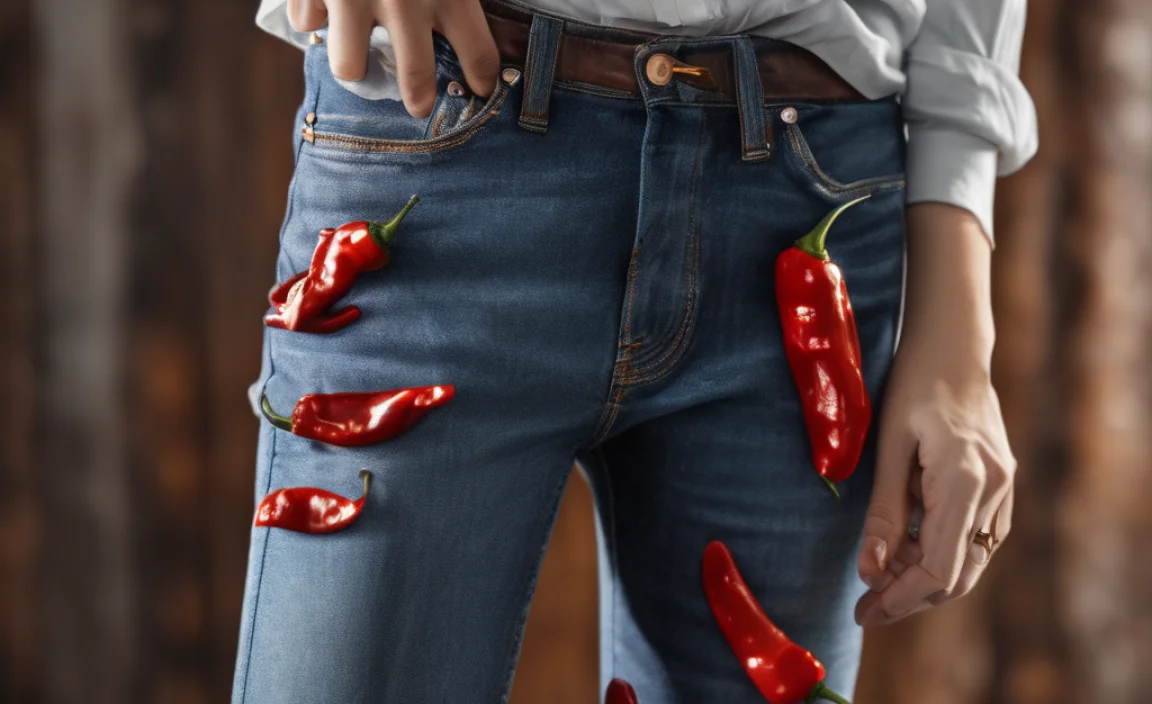
Chili oil is primarily composed of oil and pigments from chili peppers. Denim, being a cotton fabric, is absorbent. This means the oil can soak into the fibers, and the pigments can dye them, making the stain tricky. The key to success is addressing the stain while it’s fresh, or as soon as possible. Time allows the oil and color to set deeper into the fabric, making them harder to remove. Fortunately, the materials often readily available in your home are quite effective against this type of stain.
The Best Method: Step-by-Step

This method combines immediate action with effective cleaning agents to break down the oil and lift the stain. It’s designed for maximum effectiveness while being gentle enough for your denim.
What You’ll Need:
- Paper towels or a clean cloth
- Liquid dish soap (a degreasing formula works best)
- An old toothbrush or soft-bristled brush
- A stain remover spray or stick (optional, but recommended for stubborn stains)
- Washing machine
- Laundry detergent
- Cold water
- Hot water (check your jeans’ care label)
Step 1: Blot, Don’t Rub!
As soon as you notice the chili oil stain, grab a paper towel or a clean, dry cloth. Gently press it onto the stain to absorb as much excess oil as possible. The goal here is to lift the oil off the surface without pushing it deeper into the fabric fibers. Avoid rubbing, as this can spread the stain and work it further into the denim.
Step 2: Apply Dish Soap
Dish soap is formulated to cut through grease and oil. Apply a generous amount of liquid dish soap directly onto the chili oil stain. Gently work the soap into the fabric using your fingers or an old toothbrush. You want to ensure the soap makes good contact with all parts of the stained area. Let the dish soap sit on the stain for about 10-15 minutes. This gives the degreasing agents time to break down the oil.
Step 3: Rinse with Cold Water
After the dish soap has had time to work, rinse the stained area thoroughly with cold water. This helps wash away the loosened oil and soap. You can do this under a faucet or by rinsing the specific spot. Check the stain; you might already see it fading.
Step 4: Apply a Stain Remover (Optional but Recommended)
If the stain is still visible, or if it’s an older stain, now is a good time to use a dedicated stain remover. Apply a stain remover spray or stick according to the product’s instructions. These products are designed to break down a variety of stains, including oil-based ones. Allow the stain remover to sit for its recommended duration, often 5-10 minutes.
Step 5: Launder the Jeans
Now it’s time to wash the jeans. Check the care label on your jeans for the recommended water temperature. For chili oil stains, using the hottest water temperature that is safe for your denim is crucial, as heat helps to further break down and remove oil. Add your regular laundry detergent to the washing machine.
Wash the jeans as you normally would, but consider washing them alone or with other dark-colored items to prevent any potential color transfer from residual stain-fighting agents.
Step 6: Inspect BEFORE Drying
This is a critical step. After the wash cycle is complete, check the stained area carefully. Do not put the jeans in the dryer if any trace of the stain remains. The heat from the dryer will permanently set the stain, making it nearly impossible to remove later.
Step 7: Repeat if Necessary
If the stain is still visible, repeat Steps 2 through 6. You might need to pre-treat the stain again with dish soap or a stain remover and re-wash the jeans. Stubborn stains can sometimes require multiple treatments.
Step 8: Air Dry or Tumble Dry (Once Gone)
Once you are satisfied that the stain is completely gone, you can dry your jeans. You can air dry them or tumble dry them on a low heat setting, again referencing your care label. Air drying is often the gentlest option.
Pre-Treatment Options: A Deeper Dive
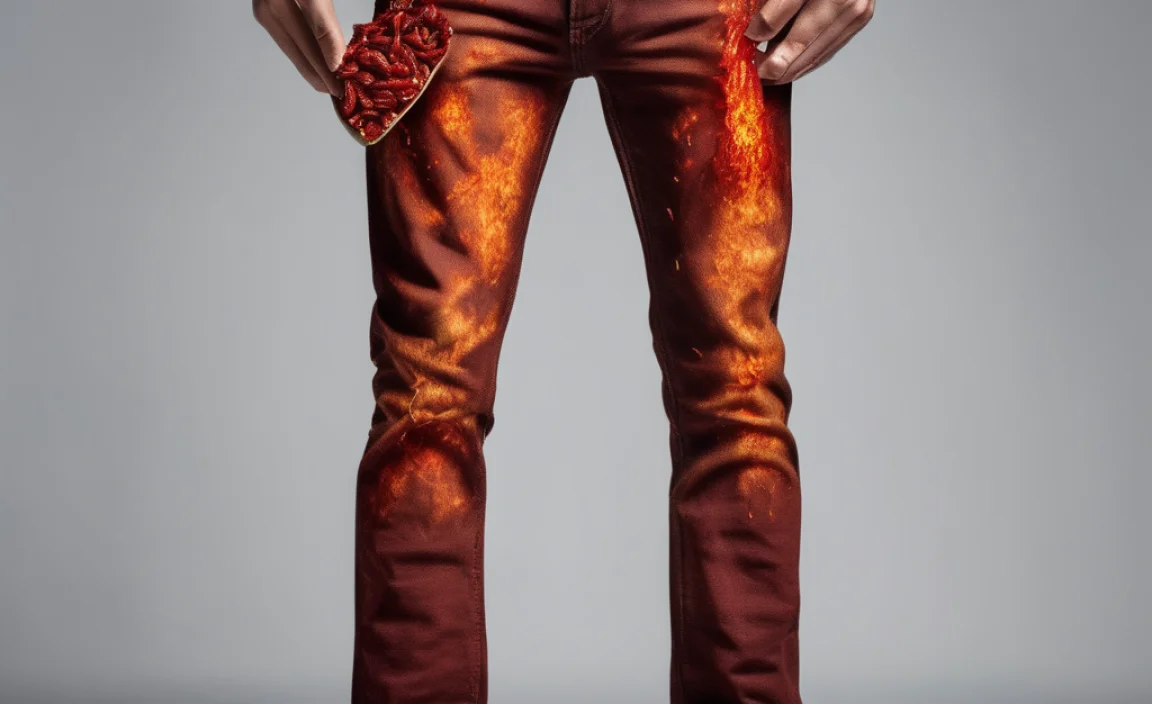
While dish soap is a powerhouse, sometimes a specialized pre-treatment can make all the difference, especially for older or more stubborn chili oil stains. Understanding these options can help you tackle the problem more effectively.
Table: Pre-Treatment Products for Chili Oil Stains
| Product Type | How it Works | Best Use Case | Considerations |
|---|---|---|---|
| Liquid Dish Soap | Excellent degreaser, breaks down oil molecules. | Fresh stains, general oil removal. | Can be used directly on the stain. Ensure it’s a good degreasing formula. |
| Enzyme-Based Stain Remover | Contains enzymes that digest organic stains (like oils and food). | Tough, set-in stains; food stains. | Follow product instructions precisely. Test on an inconspicuous area first. |
| Oxygen Bleach (e.g., OxiClean) | Releases oxygen to lift and break apart stains without harsh chemicals. | Brightening and stain removal on colored or white fabrics. | Ensure it’s safe for your denim’s color. Mix into a paste or soak. |
| Rubbing Alcohol (Isopropyl Alcohol) | Acts as a solvent to lift oil-based stains. | Spot treatment for localized oil stains. | Use sparingly. Can sometimes lighten very dark dyes, so test first. |
When choosing a pre-treatment, consider the age and severity of the stain. For a fresh spltich, dish soap is often enough. For a stain that’s been lurking, an enzyme-based remover or an oxygen bleach treatment can be more potent.
Why Hot Water is Key (and When to Be Cautious)

For oil-based stains like chili oil, hot water is your friend. Heat helps to liquefy the oil, making it easier for the detergent and the washing action to lift it away from the fabric fibers. The American Cleaning Institute confirms that warmer water temperatures generally improve cleaning performance for many types of stains, especially greasy ones.
However, always consult your jeans’ care label. Washing denim in water that is too hot can lead to shrinkage, fading, or damage to the fabric or any embellishments. If your jeans are a dark wash or have a high cotton content, err on the side of caution and use the warmest water recommended for that specific garment. For delicate denim or items with special finishes, cooler water might be necessary, and you’ll have to rely more heavily on the pre-treatment steps.
Alternative Methods for Tough Stains
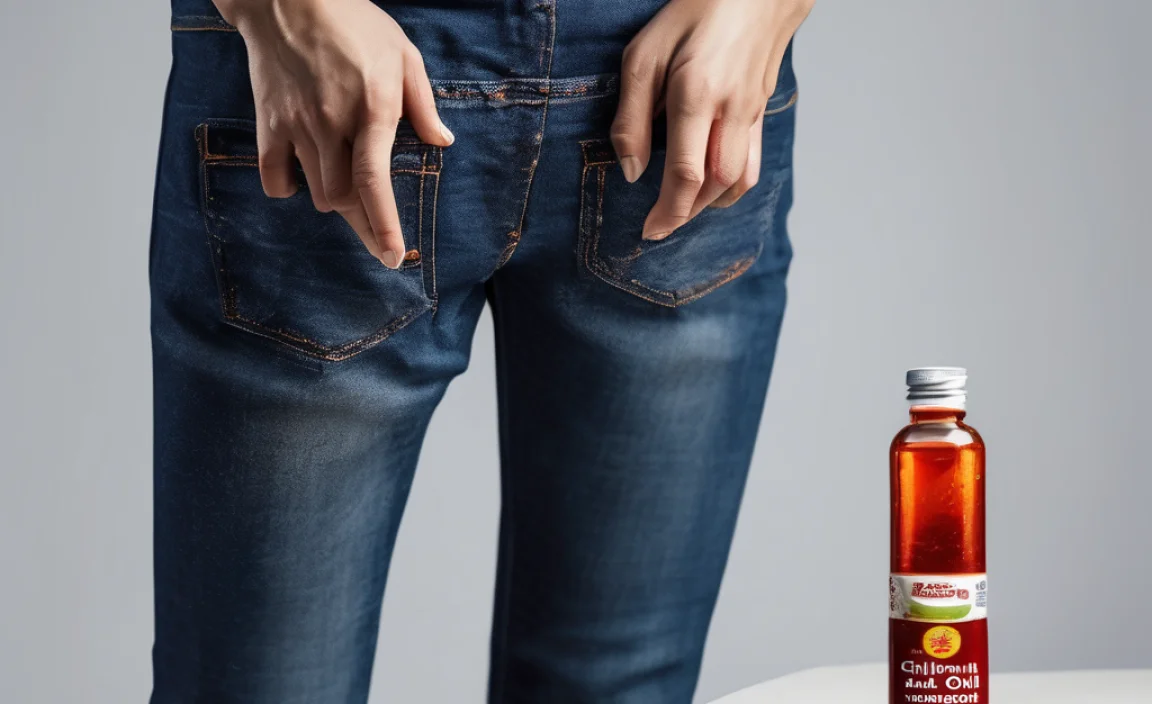
If the standard method doesn’t fully eradicate the chili oil stain, don’t despair. Here are a couple of alternative approaches you can try.
Baking Soda Paste
Baking soda is a natural absorbent and mild alkali that can help lift grease. Mix baking soda with a little water to create a thick paste. Apply this paste directly to the chili oil stain and let it dry completely. Once dry, brush off the excess baking soda and then pre-treat with dish soap before washing as usual.
Cornstarch or Talcum Powder
Similar to baking soda, these powders are excellent at absorbing oil. If the stain is fresh, liberally sprinkle cornstarch or talcum powder over the oily spot. Let it sit for at least 30 minutes, or even a few hours, to draw out the oil. Brush off the powder and then proceed with the dish soap and washing steps. This method is particularly useful if the stain is still wet.
Frequently Asked Questions (FAQ)
Q1: How quickly should I treat a chili oil stain?
The sooner, the better! Fresh stains are always easier to remove than old, set-in ones. Blotting and treating within minutes of the spill significantly increases your chances of complete removal.
Q2: Can I use bleach on chili oil stains?
Chlorine bleach should be used with extreme caution on denim, as it can permanently damage the fabric and its color. Oxygen bleach, however, is a safer alternative for most colored and white denim. Always check the garment’s care label and test on an inconspicuous area first.
Q3: My chili oil stain is old and dried. What should I do?
For old stains, you’ll likely need a more aggressive pre-treatment. Soak the stained area in a solution of warm water and an enzyme-based stain remover or oxygen bleach for several hours or overnight. Then, pre-treat with dish soap and wash as usual. You may need to repeat this process.
Q4: Will dish soap damage my jeans?
No, when used as a pre-treatment for specific stains, standard liquid dish soap (like Dawn or similar degreasing brands) is generally safe for most denim fabrics. It’s specifically designed to break down grease without harming most textile fibers.
Q5: What is the best way to dry jeans after treating a stain?
Always inspect the stained area to ensure the stain is completely gone before drying. If the stain is gone, you can air dry or tumble dry on a low heat setting. If any trace of the stain remains, do not put the jeans in the dryer, as the heat will set the stain permanently. Re-treat and re-wash instead.
Q6: Are there any fabric types that are harder to get chili oil stains out of?
Very delicate fabrics, silk blends, or heavily dyed materials can be more challenging. Denim, being a sturdy cotton twill, is relatively resilient. However, always check the garment’s care label before attempting any stain removal technique. For highly sensitive fabrics, professional cleaning might be the safest option.
Preventing Future Chili Oil Stains
While it’s impossible to avoid every spill, a few habits can reduce the risk of chili oil stains on your jeans:
- Be Mindful When Eating: Especially when consuming saucy or oily foods, try to eat over a plate or napkin, and be aware of your movements.
- Wear an Apron: If you’re cooking with chili oil or know you’ll be in a situation where spills are likely (like a backyard BBQ), consider wearing an apron over your jeans.
- Choose Darker Washes: Darker colored denim tends to hide minor spills and stains more effectively than lighter washes.
- Consider “Work Clothes”: Have a pair of older or dedicated “work” jeans that you don’t mind getting a little mess on.
Being prepared can save you a lot of cleaning effort down the line.
Conclusion
Dealing with chili oil stains on your jeans doesn’t have to be stressful. By acting quickly to blot the excess oil, pre-treating with a good degreasing agent like dish soap, and washing in the appropriate water temperature, you can effectively lift these stubborn marks. Remember that patience is key; some stains may require multiple treatments. Always check your jeans’ care label, inspect the stain before drying, and don’t give up if it doesn’t come out on the first try. With these straightforward steps and a little persistence, your chili oil-stained denim can be restored, allowing you to continue enjoying your favorite jeans with confidence.


